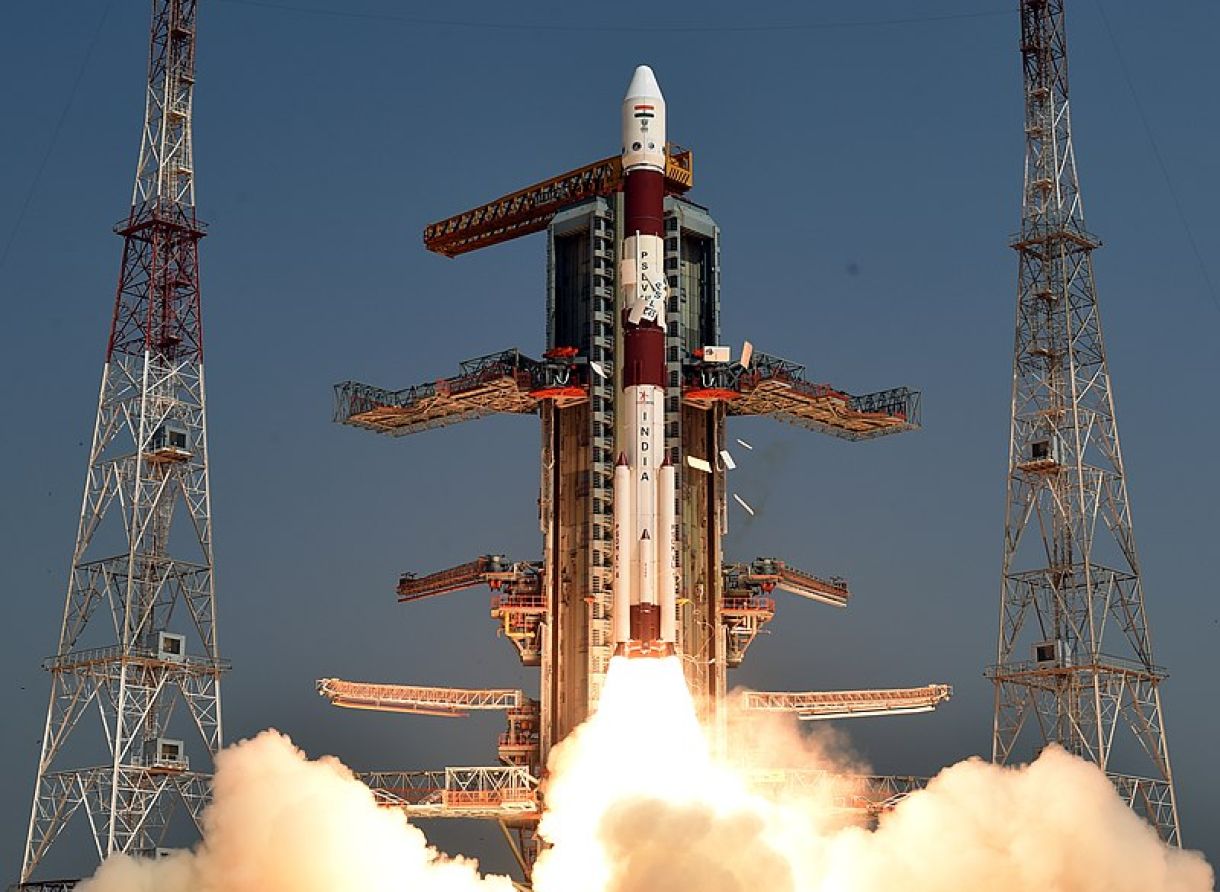Chairman of the Indian Space Research Organisation (ISRO), Dr. S Somanath, has revealed the ongoing development of a Next-Gen Launch Vehicle (NGLV) to replace the decades-old Polar Satellite Launch Vehicles (PSLV) that have been the backbone of several of the Indian space agency’s missions.
“PSLV has to retire – today, tomorrow, or a decade later. PSLV is a 1980s-era technology and can’t be used for missions in the 2030s. It is not correct.” Somanath said during his keynote address at the three-day ‘Engineers Conclave-2022’, which opened at the Liquid Propulsion Systems Centre (LPSC), Valiyamala, in Thiruvananthapuram on October 13.
The PSLVs will be replaced by the under-development Next-Gen Launch Vehicle (NGLV), which IRSO views as a cost-efficient, three-stage to-orbit, reusable heavy-lift vehicle with a payload capability of ten tons to Geostationary Transfer Orbit (GTO).
“We are working on a new-generation launch vehicle of India, which should be better in terms of cost, re-usability, manufacturing process, and possible to produce faster,” Somnath said without providing any further details about the current progress and timelines.
The NGLV will be propelled by cost-effective and more efficient semi-cryogenic propulsion comprising refined kerosene as fuel and liquid oxygen (LOX) as an oxidizer for the booster stages.
The NGLV will reportedly have a simple and robust design to realize bulk manufacturing, modularity in systems, sub-systems, and stages, and minimal turnaround time. It will potentially be used for launching communication satellites, deep space missions, future human spaceflight, and cargo missions.
“We believe at least 10-ton capability to GTO [Geosynchronous Transfer Orbit] is needed. Correspondingly, the Low Earth Orbit (LEO) capability will be twice that. However, payload capability will be lower when the rocket is reusable,” Somnath said.
This is because, in a reusable launch vehicle, the vehicle has to be slowed down for re-entry into the atmosphere and then landing. Some fuel has to be reserved for recovery, which cannot be used for forwarding thrust toward orbit, thus, reducing the payload capacity.
Reusable Launch Vehicles
Nevertheless, reusing launch vehicles goes a long way in reducing the cost of space exploration by eliminating the need to build a new launch vehicle for every mission that must be placed in orbit.
Elon Musk’s SpaceX has developed a reusable rocket launching system that allows it to reuse the first stage of its Falcon 9 and Falcon Heavy rockets. The first successful recovery happened in 2015, and the first successful relaunch occurred in 2017.
Since no more details are available about the NGLV program, it cannot be said whether an entire stage of the NGLV will be reusable or only some components of a stage.
Veteran Indian Air Force (IAF) fighter pilot and an analyst/columnist with The EurAsian Times – Squadron Leader Vijainder Thakur noted that ISRO is known to have been studying the possibility of recovering components from its existing launch vehicles for quite some time.
Apart from that, ISRO is also pursuing a Two Stage To Orbit (TSTO) fully reusable launch vehicle (RLV), as part of which the agency has built a winged Reusable Launch Vehicle Technology Demonstrator (RLV-TD) that is designed to take off like a rocket and then glide back to land on a traditional runway like an aircraft.
The RLV is planned to be developed through a series of experimental flights, including the hypersonic flight experiment (HEX), the landing experiment (LEX), the return flight experiment (REX), and the scramjet propulsion experiment (SPEX).
The Hypersonic Flight Experiment (HEX) was conducted in 2016, which involved the orbital insertion, deorbiting, and recovery of the winged RLV-TD over the sea.

The landing experiment (LEX) was reportedly conducted in April of this year, which involved taking the RLV-TD to an altitude of 2.3-2.4 kilometers and at a distance of 3.7 kilometers from an airstrip at Chitradurga, Karnataka, aboard a helicopter, after which it was proposed to be released to glide on its own and land on the airstrip.
ISRO’s RLV program is much more ambitious than SpaceX’s Falcon reusable rockets, as the Indian space agency also intends to recover the upper stages of the rocket that have the most complex and expensive electronics, which means the cost of rocket launching can be cut dramatically.
In Falcon reusable rockets, only the lower stages of the rockets are recovered, which are not very expensive, and the upper stages are lost in space.
What About The Existing PSLVs & GSLVs
Somnath said that the PSLV rocket has done more than 50 launches and will be used in another 30. He highlighted that the PSLV is a three-decades-old technology, its cost cannot be reduced further, and toxic and carcinogenic fuels power it.
Somnath also stressed the importance of keeping pace with the evolving launch vehicle technology, as he noted that PSLVs are built using traditional manufacturing techniques.
“If we look at launch vehicle evolution, technology induction at an appropriate time is essential. Otherwise, with the changing times when everybody (in the international launch market) can bring down the cost of access to space, traditional technology (of ISRO) will not survive. We can say it (PSLV) is a national asset and continue to operate at a high cost, but I won’t strongly recommend it,” Somnath said.
He also said that the same applies to the Geosynchronous Satellite Launch Vehicle (GSLV) rocket while noting that the GLSV Mk3 rocket is an exception, as it is a relatively new vehicle. India’s second lunar mission, Chandrayan 2, was launched using the GLSV Mk3.

It can lift satellites weighing up to 4 tons into the GTO or about 10 tons to LEO. This is more than thrice the capacity of PSLV. Also, Dr. K Sivan, the former ISRO chairman, said last year that the GLSV Mk3’s payload capability to GTO would be increased to 5 tons using a semi-cryogenic engine on the existing Mk3 rocket.
Nevertheless, India’s lift vehicles are far behind those launched by countries such as the US, Russia, China, Japan, and Europe, which an average payload capacity of at least 22 tons.
Heavier payload capacity allows more scientific instruments to be added to a mission, leading to more scientific experiments and data collection. That said, plans are underway to develop a heavy-lift launch vehicle carrying up to 16-ton payloads to GTO.
- Contact the author at tanmaykadam700@gmail.com
- Follow EurAsian Times on Google News




